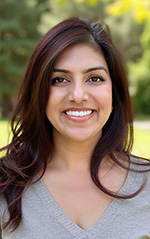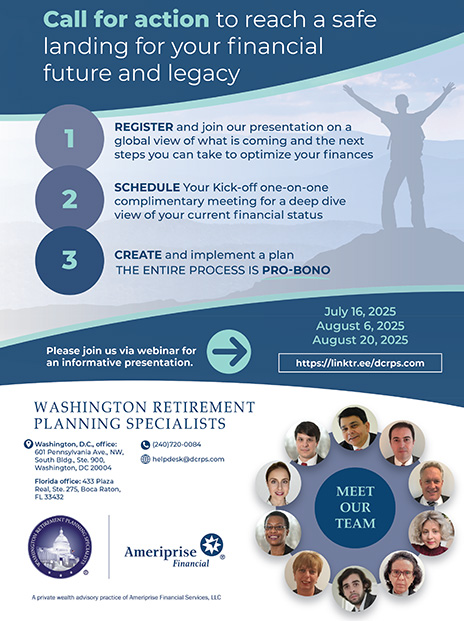Putting America First by Stopping Outbreaks at Their Source
U.S. investment in global health security doesn’t just save lives. Preventing diseases from entering our borders costs far less than responding to them when they come.
BY NIDHI BOURI
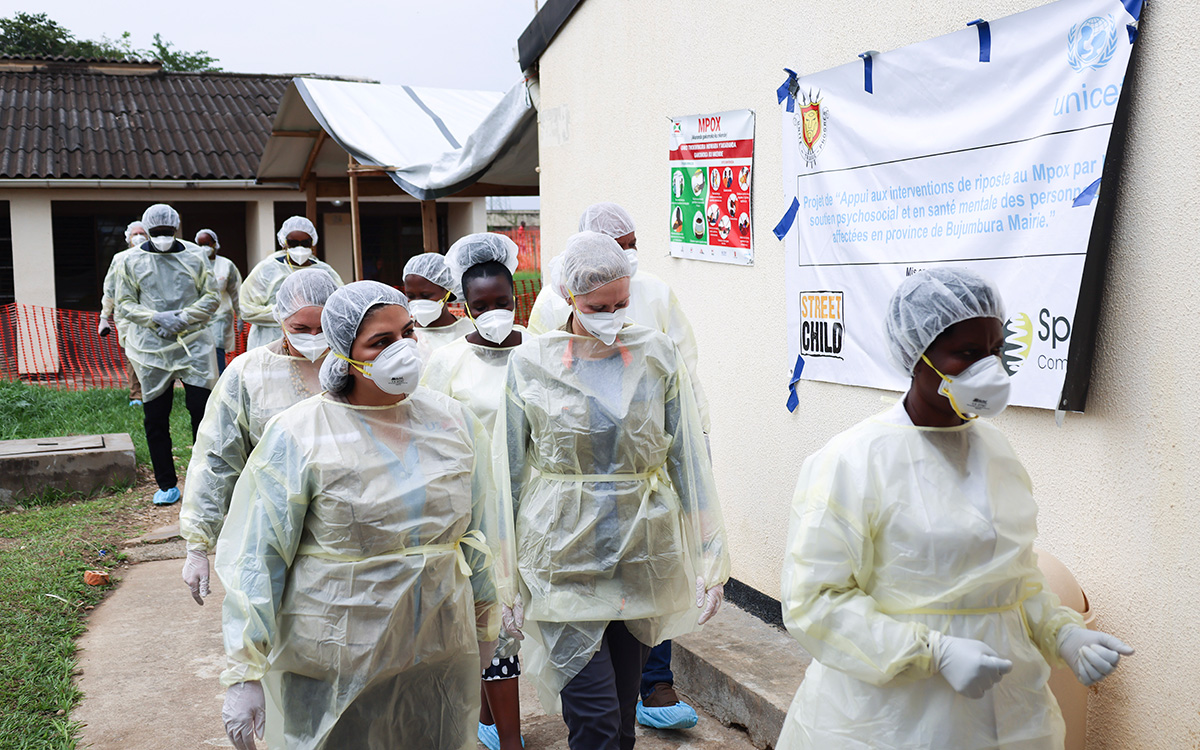
Nidhi Bouri (front left) and a team from USAID tour a private mpox treatment facility, run by Médecins Sans Frontières, in Bujumbura, October 2024.
USAID / Burundi Mission
With an average of 45,000 flights taking off and landing in the U.S. each day, there are dozens of diseases—from dengue to novel influenza and mpox—that could have easily hit our shores. But because of American investments in global health security (namely, in efforts to prevent, detect, and respond to health threats around the world), these outbreaks were contained before they ever had a chance of coming to the U.S.
Since 2015, the U.S. government has invested more than $2 billion in partnership with other countries to build national health security capacities that address deadly diseases. This includes strengthening disease surveillance and laboratory capacity, training health workers on how to identify and handle potential cases, and working with the agriculture sector to minimize the spillover of diseases from animals to humans.
To some, $2 billion—even spread across a decade—probably sounds like a lot of money. The reality? Over 10 years and 165 million American taxpayers, these expenditures amount to about $1.21 annually per taxpayer. What does that $1.21 a year buy every American? This small investment stops disease outbreaks at their source, preventing illness and deaths, mitigating strain on health systems, reducing economic risks, and stopping deadly diseases from coming to the United States.
This is important because when outbreaks do happen, they come with a major cost. Americans already face health threats within our borders, like the current measles and bird flu outbreaks affecting our communities. An outbreak of measles in Washington state from 2018 to 2019 cost $3.14 million, or $47,479 per case. The ongoing bird flu outbreak has already cost $1.4 billion. By the end of 2023, COVID-19 had cost the U.S. nearly $14 trillion in economic losses.
Preventing additional diseases from entering U.S. borders costs less than responding to them when they come.
A Case Study: Investments in Ebola Response
In December 2013, Ebola began circulating in Guinea. At the time, Guinea did not have the capacity to detect and address diseases, and the U.S. government didn’t have any health security investments in West Africa. By the time an Ebola outbreak was declared in March 2014, it had spread to Liberia and Sierra Leone, then to other countries in West Africa and beyond. In September 2014, a man traveled from Liberia to Texas. He sought medical attention for a fever and abdominal pain but was sent home. Two days later, he was diagnosed with Ebola, and it became clear he had been incorrectly diagnosed two days prior. Two clinicians contracted Ebola while treating him. One took a flight the day before showing symptoms, causing panic and resulting in financial costs to trace contacts.
Just like health systems thousands of miles away, our health system was not ready to manage Ebola cases. It cost the hospital in Dallas $500,000 to treat that single case of Ebola, not including costs to the overall health system, and the original patient ultimately died. Around the same time, an American physician treating Ebola patients in West Africa returned to New York, where he was diagnosed with and treated for Ebola. It cost the New York City Health Department $4.3 million in response measures. The patient in New York and two clinicians in Dallas all recovered. Each hospital incurred significant financial costs to treat them, while also having to triage care of other patients.
At the time, the world lacked a viable Ebola vaccine, infections among health care professionals created workforce shortages, and health systems collapsed. By the time the West Africa Ebola outbreak ended in 2016, more than 11,300 people had died, and reduced commerce, travel, and trade had resulted in an estimated $53 billion in economic losses globally. Following these losses, Congress provided a historic long-term investment to ensure that the U.S. never flew blind again. This funding created new global health security programs at USAID and the Centers for Disease Control and Prevention (CDC), which, coupled with the Global Health Security Agenda, became signature initiatives for the Obama and Trump administrations alike and have successfully stopped or contained multiple outbreaks before they reached American shores.
In 2018 I deployed to the Democratic Republic of the Congo (DRC) to help lead the U.S. government’s response to an Ebola outbreak there. The virus circulated for at least four months before it was detected, largely due to its spread in the conflict-stricken eastern part of the country. Recalling the costs to our health care system just a few years earlier and drawing on the lessons learned during the West Africa response, we rapidly mobilized to help contain the new Ebola outbreak. In partnership with the Congolese government, USAID trained community health workers to recognize and handle symptoms of the disease, while building trust with communities.
USAID and CDC worked together to improve lab testing, surveillance, and reporting, and distributed a new Ebola vaccine. CDC brought its expertise in epidemiology to support and train the DRC’s Ministry of Health, while the National Institutes of Health (NIH) supported clinical trials and the State Department led diplomatic efforts to navigate security challenges. In June 2020, as COVID-19 spread, the Ebola outbreak, the largest in DRC’s history, finally ended. The outbreak resulted in significant human capital loss (nearly 2,300 people died), as well as disruptions to the health care system, trade, and commerce in the DRC. Though still significant, the overall costs were not at the scale of the West Africa outbreak. No cases came to the U.S.
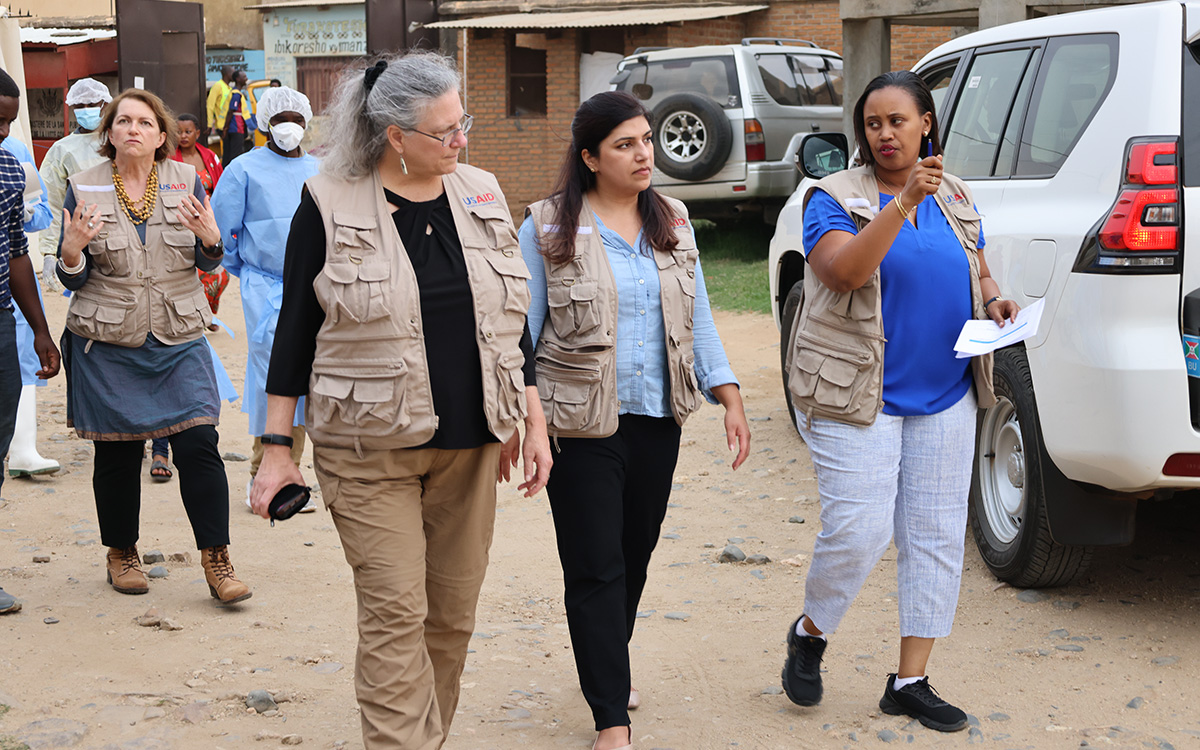
The author (front center) with USAID colleagues Christine Jost (left) and Arlette Kamariza (right) visit a World Health Organization mpox testing site supported by USAID in Bujumbura.
USAID / Burundi Mission
Leadership via Partnership
The U.S. government’s investments to contain Ebola and strengthen the DRC health system’s ability to handle health threats paid lasting dividends. Just two years later, when Ebola again hit eastern DRC, the virus was detected in 48 hours. Instead of thousands of deaths, there were five. And just like in 2018, no cases came to the U.S.
The story of Ebola outbreaks is one that demonstrates the promise of science, medicine, and public health. It’s also a story that illustrates the power of America’s leadership model—one centered on partnerships.
This model was pioneered in 2016, following the West African Ebola outbreak, and cemented in the Trump administration’s 2019 Global Health Security Strategy (GHSS). That strategy and the 2024 GHSS that updated it both reaffirm a U.S. commitment to assist 100 countries to be able to stop outbreaks at the source. The 2024 GHSS further reaffirmed the approach of leveraging partnerships and expertise across the federal government and evolving partnerships with countries to improve their readiness for health threats.
Specifically, the U.S. government committed to help 50 countries improve capabilities across critical health security areas, such as laboratory systems and surveillance. These 50 countries were identified through a consultative process across federal agencies and with U.S. embassies, considering factors such as analyses of country health systems, socioeconomic indicators, and connectivity to the U.S. including travel and trade linkages.
When a country becomes a global health security partner of the U.S. government, USAID and CDC work with counterparts in the partner government to select measurable targets in national health security plans. These targets inform what activities each agency invests in, so that U.S. support accelerates the ability of partner governments to achieve their priority targets. In the last few years, USAID and CDC teams began joint work plans at the country level—a detailed process that ensures no funding is duplicative and that it directly supports governments on a pathway to ownership, accountability, and sustainability.
While this approach is built around having concrete ways to measure success, it has also strengthened a powerful tool for America that cannot be measured: trust. Through building relationships with other countries, U.S. diplomats and technical staff earn the trust of governments we aim to work with. That is why when a country’s surveillance system shows something unusual, the first call their ministry of health makes is often to the CDC. It is why if an outbreak unfolds, and a country does not have the tools to get it under control, they will ask the U.S. for help.
Through these in-country partnerships, the U.S. gets early access to data and real-time information as diseases spread, informing how we prepare at home. And through the complementary, but distinctly different, strengths of experts across the State Department, CDC, NIH, USAID, Department of Defense, and other agencies, the U.S. government can mobilize quickly to stop diseases.
Twenty years ago, the government of Indonesia was reluctant to share information with the U.S. about avian influenza. Today, they are one of our strongest health security partners, inviting U.S. support for data analysis and partnership to promote antimicrobial stewardship. Ten years ago, Guinea’s surveillance system could not detect Ebola. In 2021, in the midst of concurrently responding to COVID-19, Guinea detected and contained Ebola before it spread. Five years ago, the government of Nigeria needed support for health emergency management. But in 2023, when experiencing outbreaks of anthrax, the government exercised capabilities built with U.S. investment. Nigeria activated national response mechanisms to coordinate efforts across the human and animal health sectors to reduce risks for further transmission.
Years of building relationships, working with nations as equals, and targeting investments to support their priorities have enabled America to be a partner of choice, stopped outbreaks before they crossed borders, and supported countries in taking ownership of their health security.
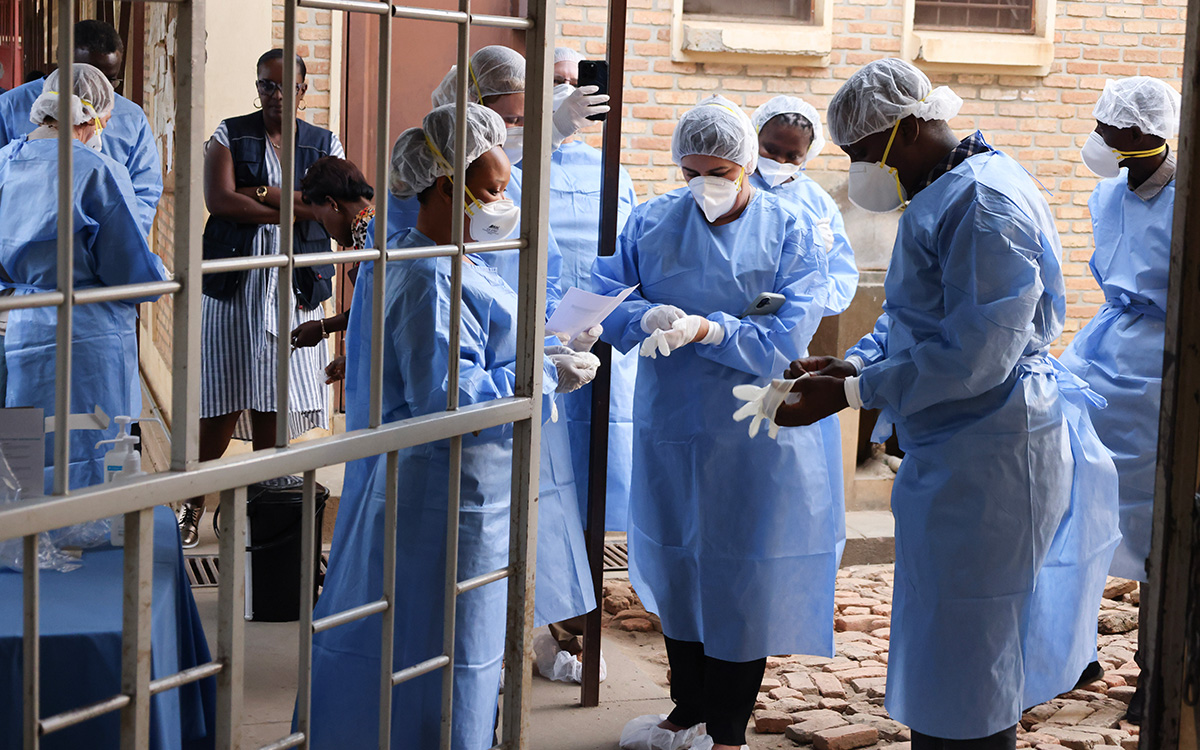
Nidhi Bouri (center, putting on gloves) joins USAID and CDC colleagues, alongside local hospital staff, to enter an mpox screening and testing site at a district hospital in Bujumbura, October 2024.
USAID / Burundi Mission
Maintain and Improve Health Security Capacity
As risk factors from globalization, climate change, and conflict increase, outbreaks, too, are on the rise. The Center for Global Development estimates there is a 47 to 57 percent probability that another pandemic will occur within the next 25 years. Even when health systems demonstrate they have the capacity to prevent, detect, and respond to health threats, they must maintain such capacities. Systems need to continuously evolve to address new threats and manage concurrent emergencies. If they don’t, when the next pandemic hits, these systems will fail.
While institutions in the U.S. government may change, strategic functions and investments in research and public health capacities must continue. The U.S. government should prioritize these essential efforts going forward:
1. Continue measurable investments that accelerate country ownership. The U.S. government’s approach to strengthening country capacities is working, and it should continue. By identifying targets within countries, and investing in activities that support reaching those targets, the U.S. government is helping countries speed up and maintain core functions that mitigate hits to their health systems and ours. This approach of investing to support national plans allows governments to take accountability and ownership of how they ultimately maintain health security capacities in the future, strategically leveraging partnerships to fill tailored gaps.
2. Maintain robust technical expertise and diplomatic capacity across the federal workforce. Across federal agencies, the U.S. maintains world-renowned scientists, epidemiologists, logisticians, and emergency managers. While agencies go through restructuring or mergers, the U.S.’s ability to support countries in preventing and containing diseases, while also maintaining adequate readiness for our domestic health system, is centered on maintaining a well-equipped workforce. Ensuring technical experts and diplomats also maintain in-country presence across regions is critical to sustaining trust and reliability among partner governments.
3. Ensure robust U.S. government capabilities to support outbreak detection and response. In numerous outbreaks, the deployment of new tools, such as diagnostics and vaccines, significantly mitigate further transmission. These tools, often showcasing the ingenuity of American innovation and research, are critical to containing outbreaks and promoting partnerships with the American private sector. Similarly, the U.S. government has maintained global stockpiles of personal protective equipment, rostered public health and emergency response experts, and maintained accelerated grantmaking functions to rapidly respond to outbreaks when they occur. From research and development to deployment capabilities, it is in the interest of Americans for these investments to continue.
These efforts contain diseases before they come to the U.S., inform our own preparedness, and allow us to monitor and deploy tools to respond to health threats. Doing so makes the world a safer place and protects Americans at home and abroad. It helps us put America first.
When sharing or linking to FSJ articles online, which we welcome and encourage, please be sure to cite the magazine (The Foreign Service Journal) and the month and year of publication. Please check the permissions page for further details.
Read More...
- “Working with Ghana to Prevent the Spread of Ebola” by Jim Bever, The Foreign Service Journal, January-February 2018
- “Rethinking Public Diplomacy for a Post-Pandemic World” by Jain (Jay) Wang, The Foreign Service Journal, July-August 2020
- “Preventing, Detecting, and Responding to Animal Disease Threats: 20 Years of UN FAO ECTAD,” CSIS panel, November 2024

